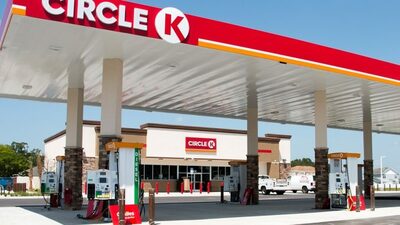What’s the Real Cost To A Retailer For EV Charging?
EV owners may reduce their fuel costs by charging at home but increase costs with fast chargers— and the businesses that offer those fast chargers lose all around.
ALEXANDRIA, Va. November 16, 2021; NACS online asked how much does it actually cost to “fill up” an electric vehicle compared to a gasoline-powered vehicle? It depends on where you live, and whether you fill up at home or with a fast charger, according to the Wall Street Journal.
The Journal took two popular cars—the electric 2021 Ford Mustang Mach-E and the gasoline-powered Toyota RAV4, both compact crossover SUVs that seat five—and determined the cost of an electric fill up compared with local gas prices in 15 U.S. cities.
In Spokane, Wash., which has relatively expensive gasoline but low electricity rates thanks to hydroelectric power, a Mach-E owner saves $899 a year over the RAV4; however, in New York City, which has pricey power and gasoline, a Mach-E driver would save less than half as much in a year: $428.
Across the board, it’s cheaper to charge your EV at home, and most EV owners are also homeowners. At-home chargers cost $0.19 per kilowatt hour, but homeowners also need to factor in the cost of a 240-volt charging station, which costs around $500, as well as hiring an electrician—another $500 to $1,500. Local incentives could cut this cost. For example, in Los Angeles, utility customers can get a $500 rebate for the EV charger.
The Wall Street Journal looked at a 300-mile road trip using a fast charger to fill up. Using a fast charger at $0.31 per kilowatt hour, a Mach-E owner would end up paying $12.25 more than a RAV4 owner for the trip. In most cities, drivers spent about $4 to $12 more to travel 300 miles in the EV.
While the Wall Street Journal’s look at the price of charging an EV is useful and accurate, what’s not seen is the demand charge costs for fast chargers that electric utilities impose on businesses to operate fast chargers.
“While electric vehicle drivers today are indeed charged about 31 cents per kilowatt-hour for charging, those prices do not reflect the demand charges that electric utilities impose on businesses that operate fast chargers,” said Doug Kantor, general counsel, NACS. “Those demand charges are added to businesses’ monthly electric bills based on the highest electricity output the businesses require over the course of a month. It turns out that fast chargers need a lot of electricity very quickly to do their job, and when they do, local businesses get hit with penalty-level demand charges.”
Demand charges can add anywhere from $5 to $40 per kilowatt-hour to the cost paid by the operator of the charger, translating to 16 to 129 times the amount that consumers pay for electricity. EV operators are consistently losing money today, Kantor notes.
Kantor says that these demand charges are an unfair trade practice engaged in by the major electric utilities across the nation. According to Kantor, now that a monopolized market for electricity is bumping up against one of the most price-transparent, competitive markets in the nation (vehicle fueling), the incompatibility between the monopolies and competition is creating real pain, stunting private investment in vehicle charging and raising the possibility that utilities will try to monopolize vehicle charging just like they monopolize electricity sales to homes and offices.
“We all know that monopolized markets are bad for consumers. That drives much of the current attention to, and rethinking of, antitrust law and policy. The danger for the future of electric vehicles is that we are so eager to move quickly to expand charging offerings that we don’t see this anti-competitive problem growing in the market for charging while we build it. We would all be better off taking the time to ensure that we will have a competitive, level playing field for charging before we get too far down the proverbial road,” said Kantor.
Read more about electricity demand charges and what they mean for retailers’ ability to turn a profit from EV charging in the September issue of NACS Magazine.




